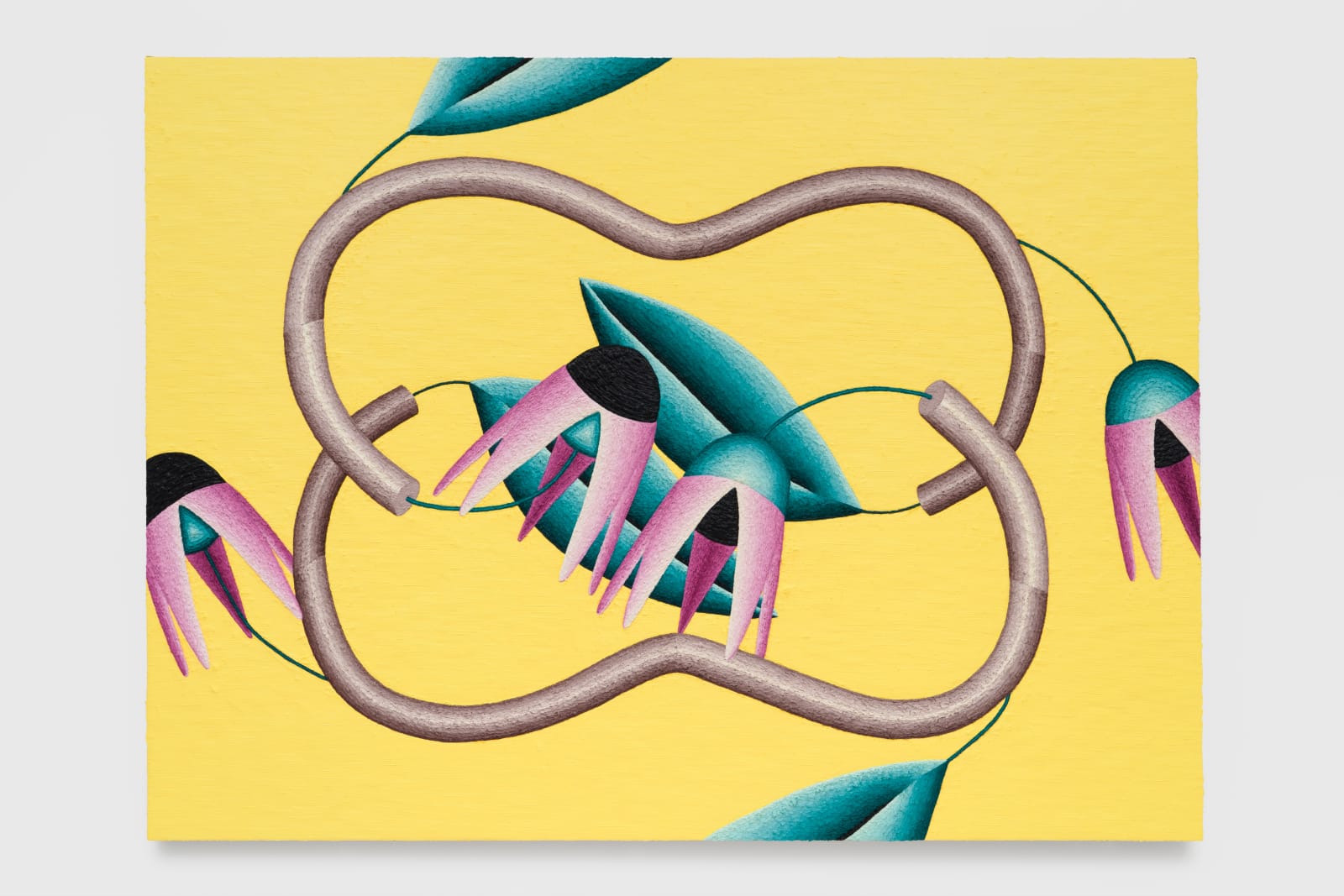

Nadia Ayari
Forging a symbiotic mutation between figuration and abstraction, Ayari’s compositions take on a constellation of protagonists drawn from the flora of her native North Africa. In her work, the petals, the leaves, the branches, and other organic forms appear as recurring symbols set against a spectrum of saturated tones, and protrude from circular, vertical and diagonal stems. The abundant repetition and subtle variations of these demarcated motifs create configurations of abstracted, futuristic still-life images—like poetry suspended in motion. Employing oil paint and embracing its materiality, Ayari’s meticulous brushwork yields to a layering process on boldly coloured backgrounds within which the characters’ divergent positioning succumbs to an intense force. As the artist puts it, “My work tackles narratives of survival. Lately, I have been exploring images where, against all odds, my paintings’ branches, pink flowers and leaves are thriving; either by being in motion or in connection with one another.”
This set of floral elements, captured in an arrangement of distinct flux, calls to mind the notion of Phenometry—the scientific study or measurement of plants and their growth. Ayari fastidiously renders the pink flowers’ dendritic curves and symmetrical edges while keeping track of their lengthening and overlap. As a scientist might, she considers the larger meaning of each composition. It is precisely at this intersection where the artist deliberates with a philosophical posthumanist resonance. One might be tempted to interpret the paintings as pointing to a common central narrative, but each piece, existing in conjunction with the others, presents a matrix of codes that Ayari carefully crafts and negotiates in her creative process. All the characters in the work simultaneously embody many things. The compositions germinate multivalent narratives as they travel across the canvases’ surfaces. In this sense, “post-humanism implies the understanding of the plurality of the human experience; the human is not recognized as one but as many, that is, human(s).”
The thickness of Ayari’s impasto gives the work’s elements a substantial skin, where layers upon layers generate multidimensional textures. Showcasing her wet-on-wet technique, her paintings configure a geometric mutation of tube-like stems, leaves and flowers that seem to swirl and unfurl in perpetuity on brilliant yellow, green, pink and orange backgrounds. The repetitive interaction of brush, paint and surface takes on a ritualistic dimension. In delicate strokes, each mark condenses the previous one thus granting the process its momentum and allowing the pieces to withstand the passage of time.
NEWSLETTER
Get the latest updates on exhibitions, art fairs, events and exclusive content from Selma Feriani Gallery.
* denotes required fields
We will process the personal data you have supplied in accordance with our privacy policy (available on request). You can unsubscribe or change your preferences at any time by clicking the link in our emails.

